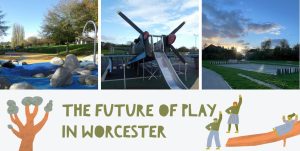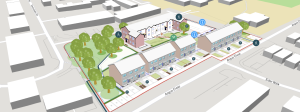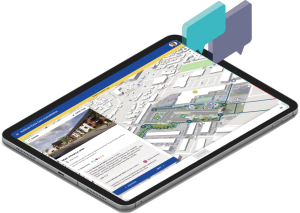Incorporating early and consistent community engagement into your organisation's approach to planning projects can seem daunting, but it's a manageable task. Typically, community engagement in planning projects has recurring activities which can be learned and improved over time. And with a greater number of digital community engagement tools and platforms available, early community engagement becomes easier than ever.
Here, we have outlined five essential activity areas for productive community engagement. If you manage to consider actions in each of those, your engagement efforts have a good chance to generate those helpful conversations and insights that are valuable to inform a planning proposal. Building capacity in each of those activity areas will generate a good well-rounded project, and each trip around the cycle of activities will have you improve next time around.
Key activity areas in productive consultations
Objectives: Aligning community engagement to your project stage
Any engagement activity starts by defining a narrow high-level aim. Per each stage of your engagement programme, make sure to have thought of a set of (no more than three) key focus questions relevant to that aim and your project at that moment to clarify the overall purpose / higher-level question of the engagement activity. Having focus clears your thinking but also help respondents focus their response more easily.
The aim of engagement often aligns with the stage your project is at, i.e. is it about finding high-level priorities, or are there already designs/ideas, that need further fleshing out; or is it about a final yes and no vote. Generally, if there are multiple aims, consider whether you can simplify.

Prep: Preparing visuals and an engaging copy
For development schemes, plan in some time required to reformat drawings produced by engineers or architects into appealing easy to use visual content. Think about the kind of content you'd ideally use for a similar project in the future to ensure consistency over time.
For engineering and technical drawings, often the simplest (low cost & quick) strategy is to provide a brief mock-up or stylised image that excludes all irrelevant levels of detail (unnecessary descriptions, measurements, file versions etc). The material should speak back to the overall intended outcomes as well as the audience that needs to be reached.
For projects that engage with a wider area, it helps to relate to places through the use of maps so that on the minimum key focus areas are shown. Those help respondents focus and relate to your goals and areas of interests.
Providing maps in addition with text content has been shown to help with recall and insight and so respondents will appreciate any material that engages them in ‘right brain thinking’ and raises their level of spatial awareness, improving the actionability of responses.




Promotion: Building momentum and finding your audience
This is about the challenge of getting the message out. Here it is useful to gather a list of possible organisations or identifiable individuals that may be supportive of the project or who have an intrinsic stake in the project. Again, develop a process for this stage, so that it becomes consistent over time. In some instances, the local authority would have a good number of contacts, too. Reaching the right members of the public thus becomes a question of finding the right identifiable groups and facilitating existing networks.
Another popular alternative is to pay for targeted advertising on social media. Especially Facebook provides micro-targeting and can reach specific demographics based on smaller locations. Social media is also the ideal to reach younger demographics that may be more likely to use digital media than older groups.
Finally, a physical presence or materials are not to be underestimated: It is worth to spend some time considering where notes and leaflets could be left for individuals to pick them up and feedback later. It is often quite challenging to grab people’s attention through flyers and leaflets alone, which is why it is useful to tap into established networks (see point above).
Read more here:
Communications plans: A key element in successful town planning consultation
How to promote your online planning consultation to residents
Feedback: Gathering responses
Hopefully, by now you have all key ingredients in place: easy to communicate goals, some suitable visuals, and a set of contacts to start with. Once a project is underway, especially when it runs online, it is good to arrange things as efficiently as possible while also making it as easy and convenient for target audiences to engage.
Build a capacity to check in during the engagement activity and continue to communicate, not just at the beginning, but also halfway or towards the end of the engagement project. Digital-enabled approaches are perfectly suited for this approach. In the ‘gathering momentum’ step, a clear call to action can work wonders especially if combined with a clear link or address for individuals to go. Let participants sign up for updates, for instance, once they respondent. A digital-enabled approach can facilitate the convenience of online media, to help tailor the responses to the audience through interactive visuals and feedback channels that handle all the heavy lifting, such as automatic confirmations that responses were received.
A digital-enabled approach can also compliment workshops and public events if they are designed around the same aim. This way participants will have the opportunity to prepare before meeting you or even after they go away, in case they had anything else to add. It is good to accept responses by writing or by email and collate those systematically for follow-up. Likewise, a digital-enabled approach helps respondents follow-up or input at a later date.
Closing the loop: Responding and actioning
Online media are great to establish a forum for participants to review their responses and, if so configured, other individuals’ responses. Once the project closes, it is worth to follow-up with a brief email to those individuals who left contact details. Short and clear updates with simple thank you note and an indication of any next steps often work wonders to help manage expectations. It would even be appreciated by those who left negative responses.
Choosing the right tools will help you make it easier to respond to individual comments, for example by noticing comment groups and tailoring respective replies to all those responses that related to a similar issue and to customise the follow-up response easily. All being well, you should now have a good idea of public perceptions and two or three ideas for optimising your project.
Read more here:
Online planning consultations: Why you should follow up
Statement of Community Involvement: Six tips for robust community engagement reports
Conclusions
In essence, the journey through these activity areas is a journey towards a more inclusive, collaborative, and responsive approach to planning. It's about moving beyond seeing community engagement as a box to be checked, to understanding it as a dynamic and integral part of the planning process.
By focusing on these activity areas for productive community engagement, your planning projects are more likely to succeed and resonate with the community.
